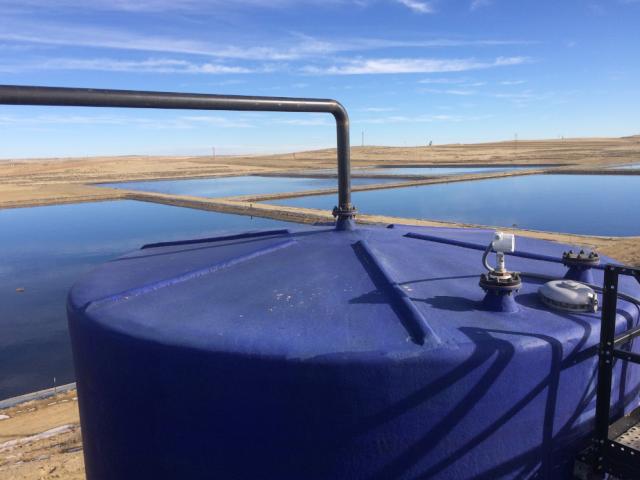
The Powder River Basin is in an earlier developmental phase than the Permian Basin. OWL’s Pumpkin Buttes facility in Wyoming (shown) provides treating services for producers. (Source: Oilfield Water Logistics)
[Editor's note: This story originally appeared in the March 2020 edition of E&P. Subscribe to the magazine here.]
In their efforts to win back investor and analyst confidence, operators are going through their closets to see what no longer fits. Operators are increasingly finding that their water midstream assets don’t fit as well as they used to. During 2019 and into 2020, the likes of PDC Energy (which eventually merged with SRC Energy), Continental Resources, Noble Energy and Concho Resources, among others, all shed water management assets from supply lines to disposal wells.
The trend continued almost immediately when the calendar flipped to 2020. In January EOG Resources sold 23 saltwater disposal wells and 300 miles of gathering pipelines to Oilfield Water Logistics, according to a report in the Houston Chronicle.
Most agree that in the current oil and gas industry economic environment consolidation is both imminent and necessary. And as the multitude of shale wells start to age and produce more water, water management will continue to play a key role in operations.
However, as Shawn Maxson, principal and oilfield services practice lead at Deloitte, explained, for companies looking to maximize operational costs efficiencies, water midstream operations don’t come with the same margins as production growth.
“You don’t get the same level of return on investments in water management infrastructure that you do growing a new producing well,” he said. “There are better uses of capital, and there are companies out there that are more capable at optimizing their water management infrastructure and managing it on an ongoing basis.”
Maxson believes that more consolidation in the water midstream market will benefit the industry in the long term.
“Ultimately, it’s about scale,” he said. “Consolidation is a good thing from that perspective, as long as you have some alternatives that provide the capability to ensure the market is balanced.”
One such alternative could be joint ventures (JVs) between operators and water midstream companies. In July 2019, Concho Resources formed a JV with Solaris Water Midstream for produced water management in the northern Delaware Basin. In a case of two service providers joining forces, H2O Midstream and Layne Midstream signed a long-term contract in January 2019 to serve as the preferred water services provider for University Lands, covering water operations across 167,000 acres in the Delaware Basin. Those two deals are likely indicative of what the industry will see, particularly in the Permian Basin. It’s a dynamic that also could lead to new innovators entering the market and testing the waters.
“The majority of activity will be focused in the Permian,” Maxson said. “I think we’re going to continue to see small startups investing in innovative ways to deal with water recycling and reuse. Hopefully, we’ll start seeing some trends that move us more toward more efficient water management models.”
Over the next few years, operators are likely to discover the clothes in their closet are a bit more stylish and fit a bit better. As for what they decide to discard, deals are likely to be had for the enterprising midstream provider.
Recommended Reading
Wayangankar: Golden Era for US Natural Gas Storage – Version 2.0
2024-04-19 - While the current resurgence in gas storage is reminiscent of the 2000s —an era that saw ~400 Bcf of storage capacity additions — the market drivers providing the tailwinds today are drastically different from that cycle.
Biden Administration Criticized for Limits to Arctic Oil, Gas Drilling
2024-04-19 - The Bureau of Land Management is limiting new oil and gas leasing in the Arctic and also shut down a road proposal for industrial mining purposes.
PHX Minerals’ Borrowing Base Reaffirmed
2024-04-19 - PHX Minerals said the company’s credit facility was extended through Sept. 1, 2028.
SLB’s ChampionX Acquisition Key to Production Recovery Market
2024-04-19 - During a quarterly earnings call, SLB CEO Olivier Le Peuch highlighted the production recovery market as a key part of the company’s growth strategy.
Exclusive: The Politics, Realities and Benefits of Natural Gas
2024-04-19 - Replacing just 5% of coal-fired power plants with U.S. LNG — even at average methane and greenhouse-gas emissions intensity — could reduce energy sector emissions by 30% globally, says Chris Treanor, PAGE Coalition executive director.





